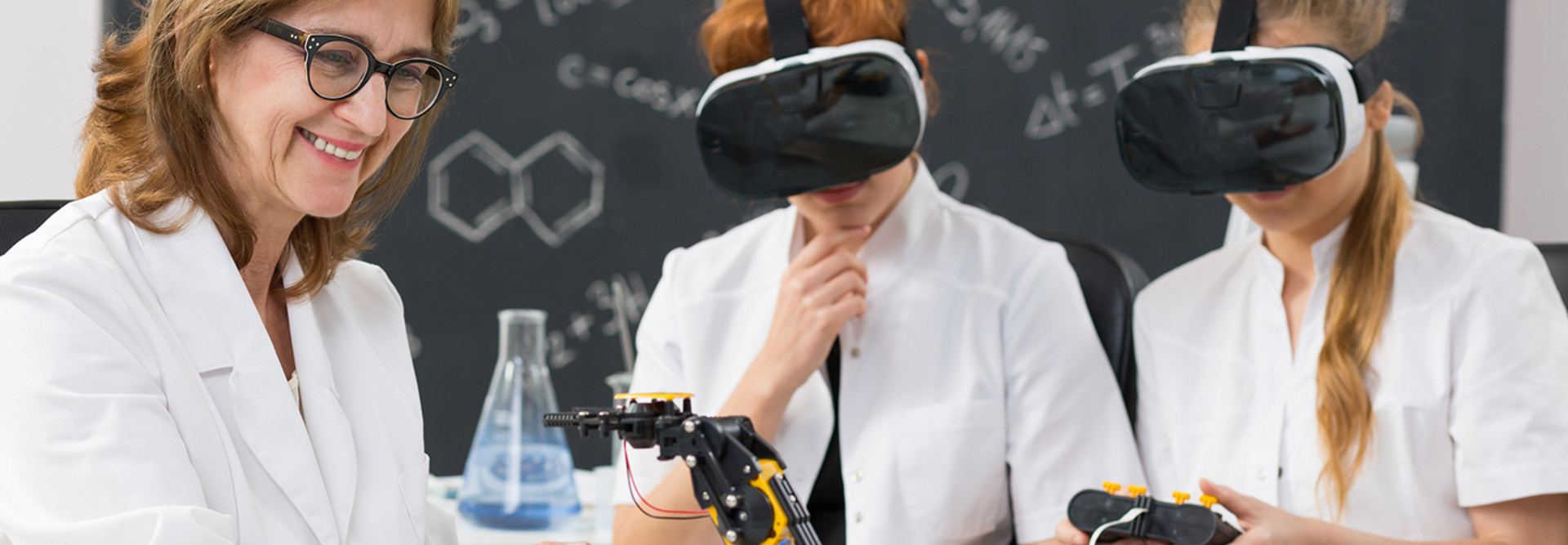Virtual Reality Goes Beyond Field Trips
By now we’ve all heard of virtual reality and, hopefully, have had a chance to try it out. If you’re lucky, you’ve seen a VR headset in action in a classroom — taking children on a journey to the Taj Mahal or helping them to dissect frogs without all the mess of the real event.
Last year, experts announced that 2016 was the year that VR would take off more intensely. In fact, the market is expected to grow to a $15.9 billion industry by 2019. By 2020, analysts from leading global bank Citi anticipate the market for hardware, networks, software and content will reach $200 billion, according to a previous blog I wrote.
What does this mean for K–12 schools? VR in schools is still in its infancy stages, and districts are just starting to find places to use the technology. Right now, makerspaces and VR seem to be a good fit, as do VR and STEM classes.
In a trend piece on TrustEd, teacher and blogger Matthew Lynch pointed out that VR can help schools that don’t have the funds for a number of science labs, for instance.
“Such places as Howard Hughes Medical Institute offer free use of online virtual labs that significantly support both scientific learning and critical thinking skills,” says Lynch.
Google also offers a number of free VR tours of natural history museums that make a class field trip even simpler.
This is all fantastic news for educators who want to expand their students’ knowledge beyond the classroom walls. But VR might be able to go even farther than that.
The Education Department is looking toward the future of VR by issuing the EdSim Challenge. What is that, exactly? According to the department, the challenge, the winners of which will be announced this summer, called for “concepts for immersive simulations that transfer academic, technical and employability skills.” The site goes on to say that “successful simulations will pair the engagement of commercial games with rigorous educational content to prepare students for the 21st century workforce.”
Judges are looking for new ways to deliver computer-generated virtual and augmented reality educational experiences. “The EdSim Challenge seeks next-generation education simulations that strengthen academic, technical and employability skills,” the website says. “The Department is most interested in immersive and engaging simulations that include clearly defined learning goals and build diverse skill sets.”
VR was exciting when it was taking us to new heights (think: the top of the Burj Khalifa in Dubai, the tallest building in the world at 2,722 feet). I can’t wait to see it launch us into the future.
This article is part of the "Connect IT: Bridging the Gap Between Education and Technology" series. Please join the discussion on Twitter by using the #ConnectIT hashtag.
![[title]Connect IT: Bridging the Gap Between Education and Technology [title]Connect IT: Bridging the Gap Between Education and Technology](http://www.edtechmagazine.com/k12/sites/default/files/articles/2014/05/connectit.jpg)









